We're working to build a network of high comfort bikeways around Cleveland. Research - and feedback from real Clevelanders - shows us that more people are willing to ride a bike when there is safe, comfortable bike infrastructure. Bicycle level of traffic stress (BLTS) measures how comfortable it is for someone to ride a bike on a segment of road or path. It ranges from 1 (low stress, comfortable for most people) to 4 (high stress, not tolerable for most people). Bicycle LTS is based on a number of factors, including the number of lanes, the speed limit, vehicle volumes, the presence any type of bikeway, and more. Many of our neighborhood streets are already considered low stress.
Depending on the context of a street, different types of bikeways may be considered high comfort. Our goal is to build a bikeway network that puts every household in Cleveland within a 5-minute walk of an LTS 1 high comfort bikeway.
We lay out our bikeway vision network in Cleveland Moves, our 5-year multimodal transportation plan. You can review BLTS on Cleveland streets on the Cleveland Open Data portal.
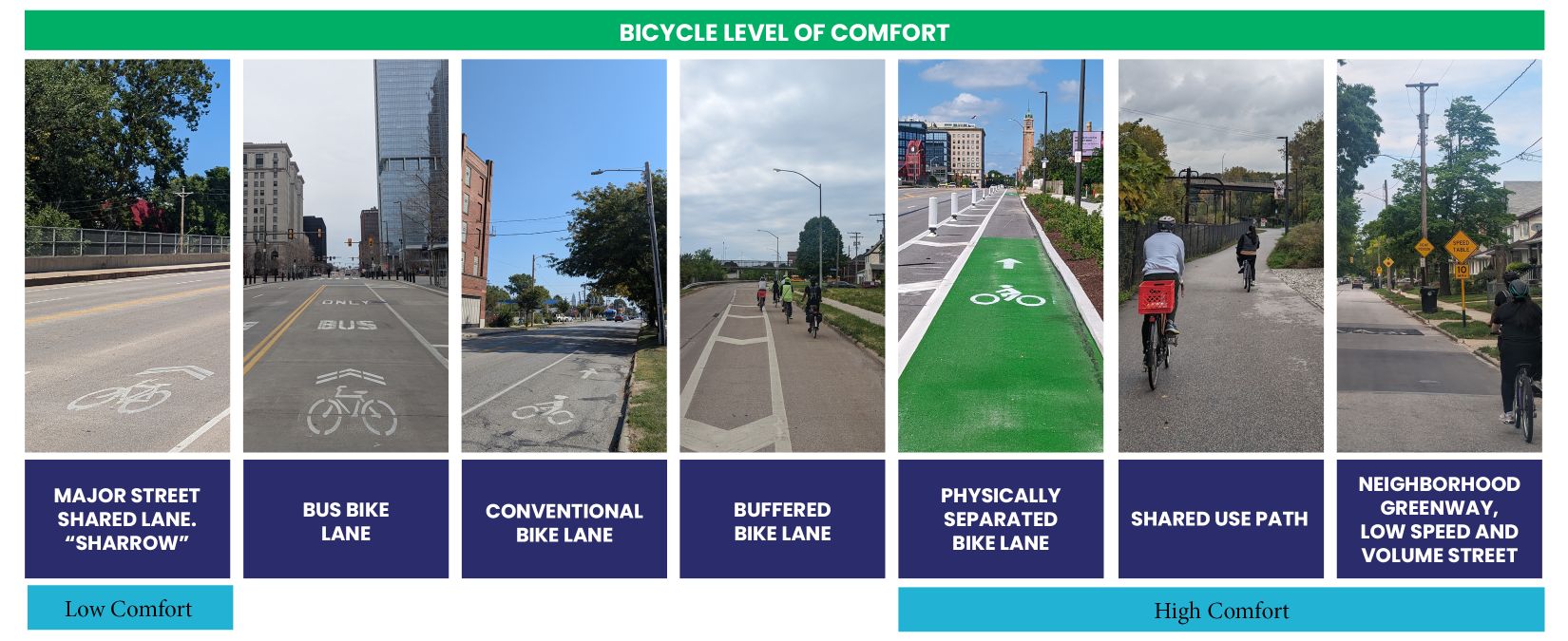
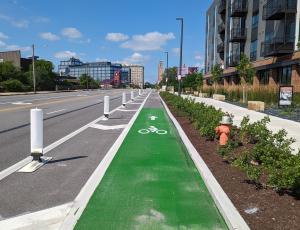
Separated Bike Lane
A separated bike lane, sometimes called a protected bike lane, includes some kind of physical separation between people biking and vehicle travel lanes. This can include plastic delineators, concrete curb, potted plants, or other items. Separated bike lanes have been shown to reduce vehicle speeds, making the street safer for everyone using it. Separated bike lanes can be one way, shown here, or two-way.
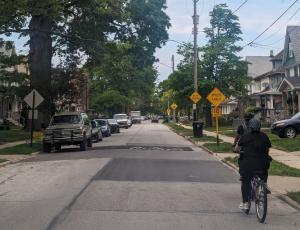
Neighborhood Greenway
A neighborhood greenway is a traffic calmed, low-vehicle volume neighborhood street. It's designated as a place that prioritizes people biking with signage and markings in the street. To make sure speeds stay low, these can include speed tables or other traffic calming.
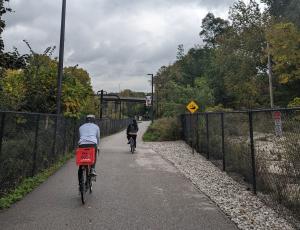
Shared Use Path
A shared use path is a sidewalk level trail that's shared by everyone walking, riding a bike, and using a mobility device. A shared use path can be next to the road, like on the Lorain-Carnegie Bridge, or away from the street, like the Red Line Greenway.
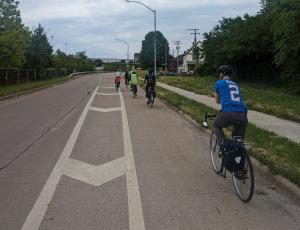
Buffered Bike Lane
A buffered bike lane is separated from a vehicle lane with space and diagonal striping. Many of our buffered bike lanes are wide enough to be upgraded to separated bike lanes.
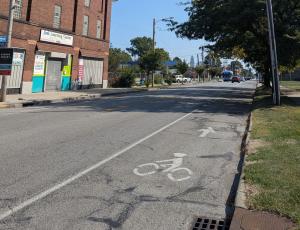
Conventional Bike Lane
A conventional bike lane is marked with a stripe on one side, with no physical separation between people driving and people riding bikes. These can be comfortable on some streets, depending on the speed and volume of vehicles.
Many of our legacy conventional bike lanes are wide enough that we can add physical separation and still maintain them during snow events.
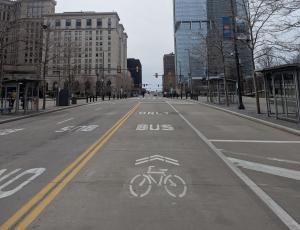
Shared Bus/Bike Lane
A shared bus/bike lane is designated only for people riding bikes or buses. The Greater Cleveland Regional Transit Agency (GCRTA) agrees that bike riders can ride in designated bus lanes, such as through the middle of Public Square. If you ride in a shared bus/bike lane, remember that buses have significant blind spots - give bus drivers plenty of room so you can both safely navigate the road.
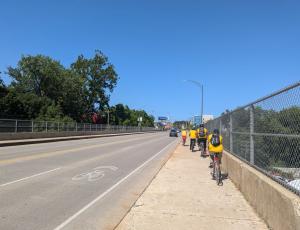
Major Street Shared Lane
Shared lane markings, or sharrows, are part of our legacy bike network. Sharrows on higher-volume streets, such as West 25th Street, don't give people riding bikes a designated space and typically don't increase the level of comfort for people riding bikes.